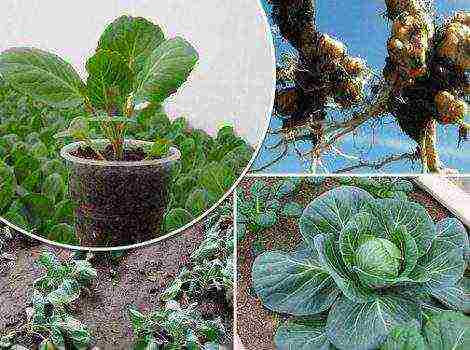Correct planting and caring for zucchini in a greenhouse
Zucchini are early ripening vegetables of the pumpkin family. The culture is unpretentious, but, despite this, it loves an abundance of light and moisture. Despite the resistance to low temperatures, experienced gardeners recommend growing zucchini in a greenhouse or greenhouse.
Benefits of growing in a greenhouse

The advantages of this type of cultivation include the following:
- gentle taste qualities;
- reduction maturation time;
- the rise yield;
- opportunity growing early varieties on an industrial scale;
- high profitability;
- low probability damage by pests and diseases.
Zucchini varieties recommended for greenhouses
Bush hybrids are best suited for greenhouses. They are not only distinguished by increased productivity and excellent taste, but also take up quite a bit of space. The most common are:
Belogor

High-yielding early maturing variety. Fruits are medium in size. The pulp is quite dense with a delicate taste. Suitable for both conservation and fresh use.
Kavili
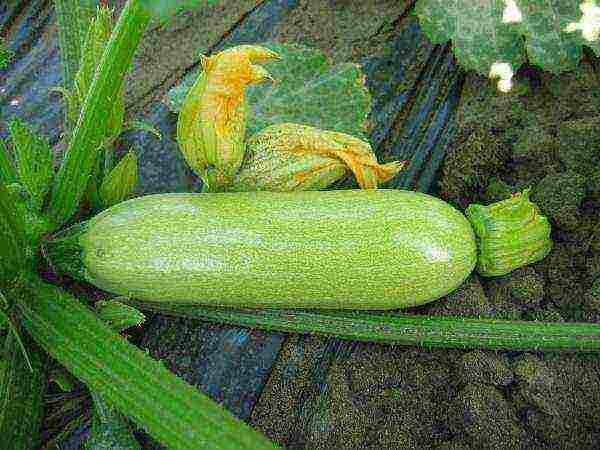
Refers to early maturing varieties. It has oblong white-green fruits. The pulp is dense, without a bitter taste. Used for making soup, stews, canning.
Kaund
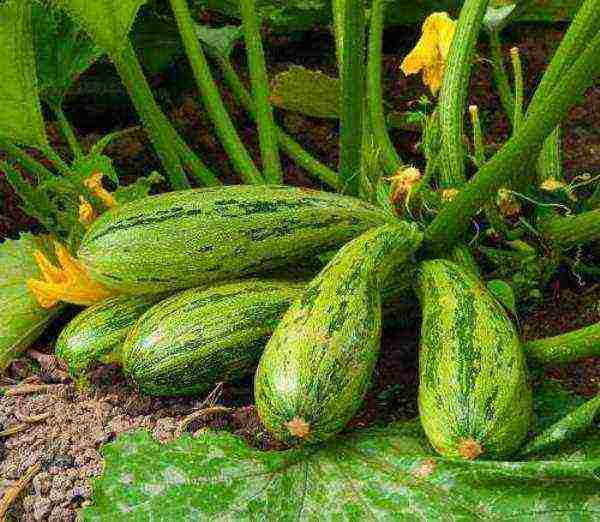
High-yielding, early ripening variety. Fruits are medium in size, smooth. The pulp is greenish-white, tender, dense, juicy.
Dates of planting seedlings in a greenhouse
Experienced gardeners have noticed that the timing of planting seedlings in greenhouses is different. They directly depend on the place of growth:
- for Moscow the optimal landing time is May 5-10;
- for Siberia - May 15-20;
- for the Krasnodar Territory - April 10-15.
Basic requirements for a greenhouse
Both polycarbonate greenhouses and conventional film greenhouses are suitable for growing zucchini. If it is supposed to be grown in winter, then in this case the greenhouse should be on a foundation and covered with glass. The optimal size is 45-50 sq. meters. The height doesn't really matter. For ventilation, the greenhouse is necessarily equipped with vents. In a glass-covered greenhouse, a wood-burning stove or electric boiler can be used for heating. A greenhouse covered with polycarbonate can be heated with heat heaters.

Biofuel is especially loved by zucchini. It warms the roots of plants well and acts as a top dressing that improves the growth of seedlings. To prepare it you will need:
- rotted mullein or pig manure;
- straw.
Mix the mullein with straw in the same amount, stack it in a heap, poured abundantly with water and left alone under a film shelter for 3-4 of the day... Then, in the greenhouse, the upper part of the soil is removed, biofuel is laid in a thin layer and a layer of soil is poured on top. The resulting cushion releases carbon dioxide, which warms the roots of the plants and promotes good growth and better palatability of the squash.
Growing features
It is best to grow zucchini seedlings. Seeds for seedlings are planted in early March. Before sowing, the seeds must be prepared:

- Cover the seeds with hot water. The water temperature should be + 45-52 degrees. Soak for 5-7 hours.
- Drop on 2 minutes into ice water. This procedure is performed in order to prevent fungal diseases.
- Wrap the seeds in a damp cloth and leave for 48 hours in a room with a temperature of at least 23 degrees. It is necessary to keep the fabric moist all this time.
Growing seedlings
When the seeds have passed the preparation stage, we proceed to planting. For planting zucchini, you need to prepare a special soil. For this we need:
- garden land - 7 parts;
- peat - 5 parts;
- mullein - 3 parts;
- ash - 150-200 grams;
- superphosphate - 30-40 grams;
- ammonium nitrate - 25-40 grams.
The diameter of the pot should be from 10 cm. The planting depth is no more than 3 cm. You can plant 2 seeds in the pot. After germination, leave one stronger sprout. When planting, it is recommended to fill the pot with soil only half. After planting, the seeds are lightly watered to ensure good contact with the soil. Before the first shoots appear, the room temperature should be +26-28 degrees.
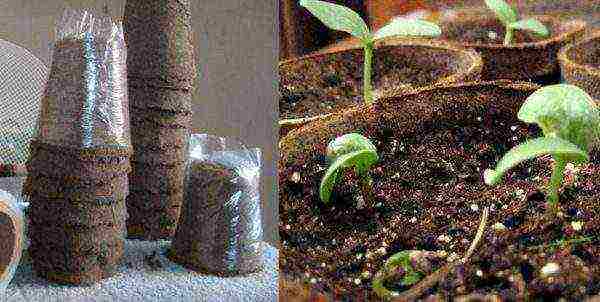
After the sprouts appear, the seedlings are transferred to a bright room with a temperature: in the daytime - + 17-18 degrees, and at night - + 12-14 degrees. This temperature regime is observed for 4 days to allow the seedlings to grow stronger. Then the temperature is maintained during the entire growing period, depending on the weather conditions:
- in cloudy weather - + 21-22 degrees;
- in sunny weather - + 26-28 degrees;
- at night - + 17-18 degrees.
Across 10-12 days after landing, the earth should be poured into peat glasses. In this case, gently twist the stem like a corkscrew. So that only the lower leaves remain on the surface.
It is recommended to water the seedlings as the soil surface dries.
If the seedlings are grown on a windowsill, it is important to consider the following lighting features:
- sill located on the south side, does not require additional lighting;
- west, east side - daylight hours at least 11 hours;
- north side - installation of additional lighting is required.
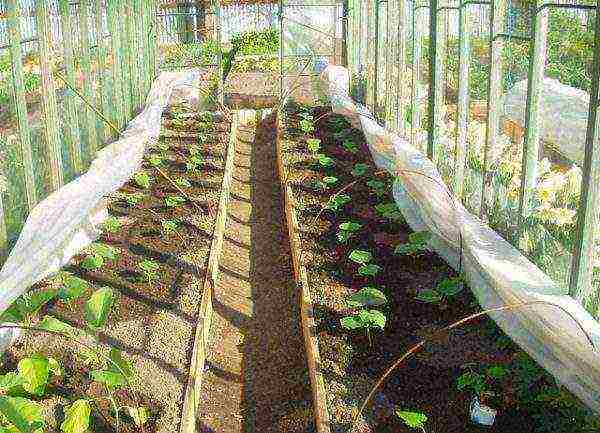
When 3-4 leaves grow on the seedlings (after 20-25 days), it is transplanted into greenhouses. It is recommended to warm up the greenhouse a little before planting seedlings. Disembarkation is performed using the square-nesting method. Between the rows there should be 50-72 cm. The well is watered well with water, seedlings are planted and sprinkled with earth to the first leaves. After transplanting seedlings, the temperature in the greenhouse should be within 14-15 degrees. Ventilate with great care so as not to significantly drop the temperature.
Care
For plants to grow strong and give a rich harvest, proper care is necessary, which in turn will prevent zucchini diseases. It is important to observe the following rules:
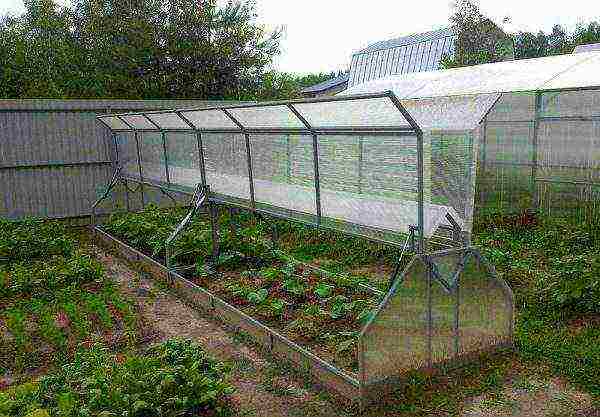
- Plants should be watered with water at room temperature.(+ 19-24 degrees) not often, but abundantly. In late April - early May, increase the amount of watering and the frequency of airing the greenhouse.
- Do not create high humidity in the greenhouse. Zucchini don't like that.
- Top dressing should be done every 10 days. For feeding, 1.5-2 liters of fresh cow dung are diluted in 10 liters of water.
- Bush should not be pinched and shape.
- To reduce moisture evaporation, the soil surface sprinkle with sawdust or peat.
- Frames are removed from greenhouses as soon as the frost stops.
- If the bush is very dense, part of the leaves in the middle of the bush should be cut with a knife.This will provide additional air penetration and facilitate access to flowers for insects that pollinate the plant.
Harvesting
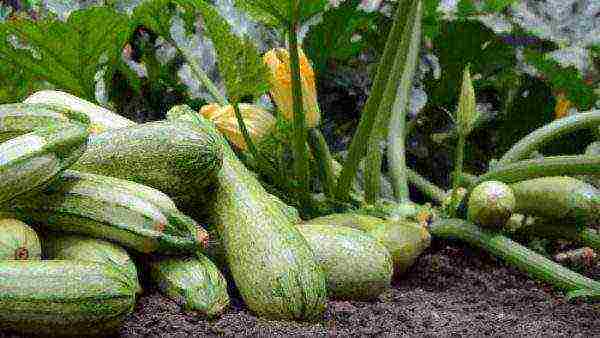
When harvesting, it is recommended to adhere to the following rules:
- The crop should be harvested when the fruits reach length 20-25 cm and 8-10 cm in diameter (45-50 days after transplanting).
- Stop watering 7 days before harvest. This will prevent the zucchini from becoming too watery.
- In the midst of ripening zucchini is recommended collect every two days.
- Remove deformed fruitsto maintain the strength of the plant.
- Overripe zucchini are removed, to enable the formation of new ovaries.
- When collecting fruits it is important not to damage them. If damaged, they lose their appearance and shelf life is reduced.
On various forums, gardeners leave their feedback and comments. Here are some of them:
Stanislav. I am very pleased with the greenhouse method. Zucchini are almost immune to disease. We harvest from the very beginning of spring until late autumn.
Raisa. I see no reason to plant zucchini in a greenhouse in the form of seedlings. I plant the seeds and they quickly catch up with the seedlings. The rest of the greenhouse is happy.
Vitaly, Krasnodar. He built his business on growing marrow in greenhouses. It is not difficult to grow, there are not many costs. I recommend to everyone…
Observing these simple recommendations, it is quite easy to grow zucchini in a greenhouse. Besides this method does not require large investments, therefore it can be a good business for gardeners and bring significant profits.

